How to Get Fit Without a Gym: 10 At-Home Workouts That Actually Work"
How to Get Fit Without a Gym: 10 At-Home Workouts That Actually Work"
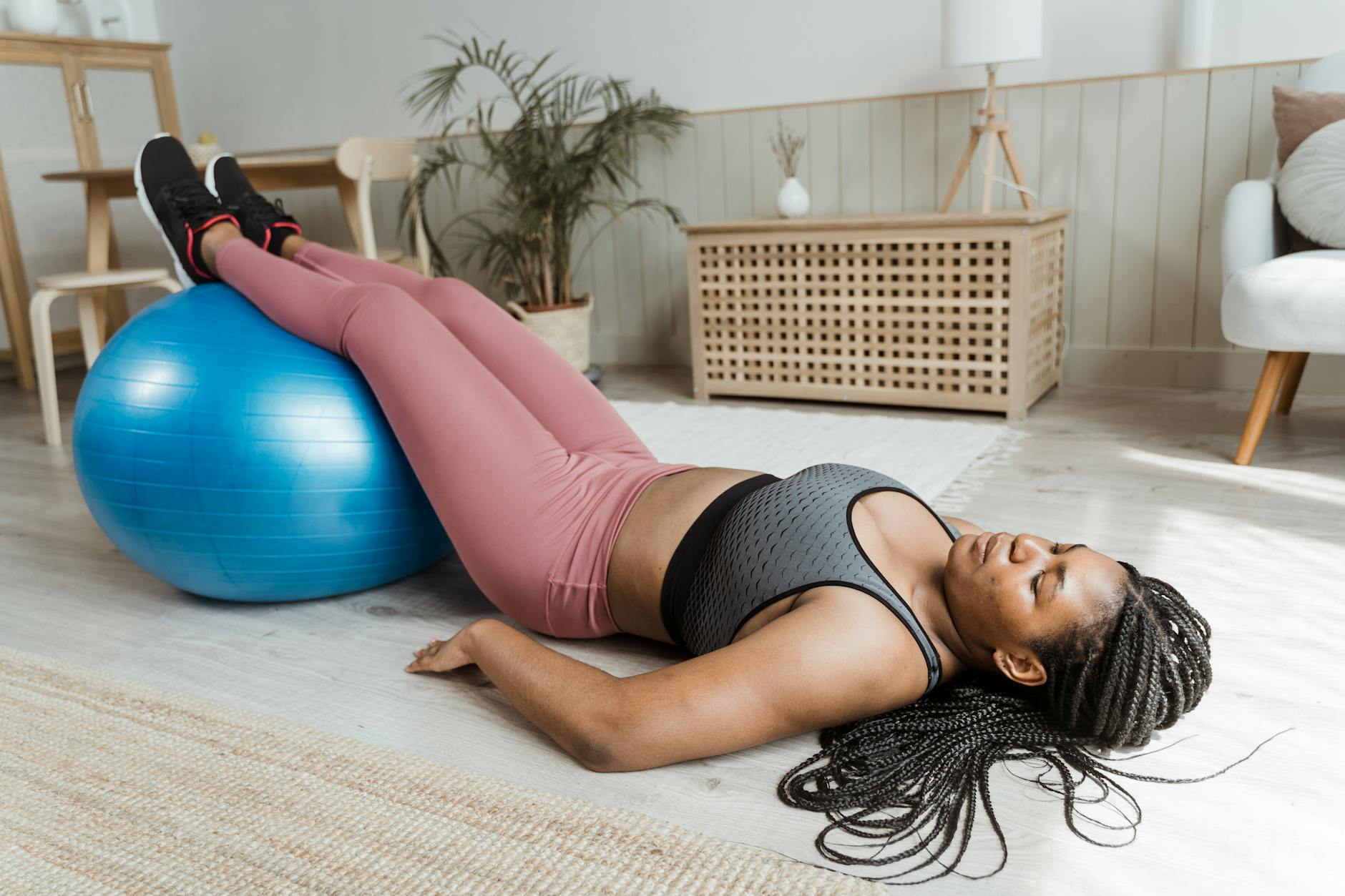
🏋️♂️ Tired of those expensive gym memberships gathering dust? You're not alone. With busy schedules and rising membership costs, many fitness enthusiasts are discovering that the best gym might actually be right at home. The secret? Knowing exactly how to transform your living space into a powerful fitness sanctuary.
Think getting fit requires fancy equipment or complicated routines? Think again. Whether you're a complete beginner or a fitness veteran looking to switch things up, at-home workouts can deliver impressive results - when done right. From bodyweight exercises that sculpt and strengthen to heart-pumping cardio that transforms your stamina, we're about to explore 10 proven workout methods that actually deliver results.
In this comprehensive guide, we'll break down everything you need to know about building your perfect home fitness routine. From essential equipment basics to advanced training techniques, we'll cover how to create, track, and maintain a workout program that fits seamlessly into your lifestyle. Get ready to discover how your fitness goals are achievable without ever stepping foot in a traditional gym. 💪
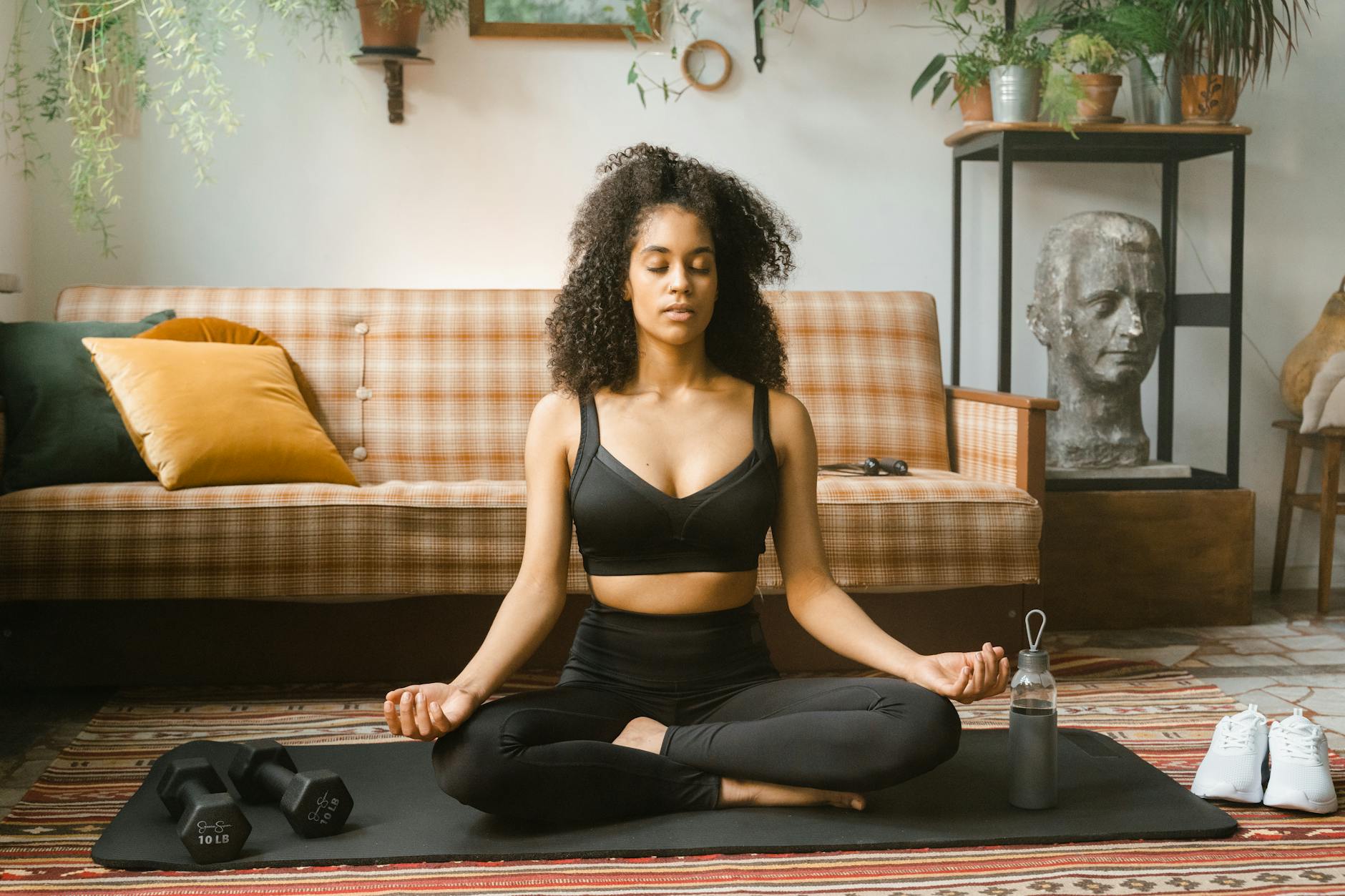
Essential Equipment for Home Workouts
Bodyweight Exercise Basics
Your body is the most fundamental piece of equipment you'll ever need. Mastering bodyweight exercises creates a solid foundation for any fitness journey. Here are the essential movements to focus on:
-
Push-ups: Upper body strength
-
Squats: Lower body power
-
Planks: Core stability
-
Lunges: Balance and coordination
-
Burpees: Full-body conditioning
Resistance Bands and Their Uses
Resistance bands are lightweight, portable, and incredibly versatile tools that can amplify your workout effectiveness:
| Exercise Type | Band Benefits | Difficulty Level |
|---|---|---|
| Upper Body | Enhanced pulling motions | Beginner to Advanced |
| Lower Body | Added resistance to squats | Beginner to Advanced |
| Core Work | Increased tension control | Intermediate |
| Mobility | Assisted stretching | All Levels |
Small Space Exercise Tools
Maximize your compact workout area with these space-efficient tools:
-
Yoga mat: Essential for floor exercises and comfort
-
Jump rope: Excellent cardio in minimal space
-
Door-mounted pull-up bar: Vertical space utilization
-
Adjustable dumbbells: All-in-one weight solution
These basic tools provide endless workout possibilities without requiring a dedicated home gym. With proper form and consistency, you can achieve remarkable results using just these fundamentals. Now that we've covered the essential equipment, let's explore how to perform effective bodyweight exercises for strength training.
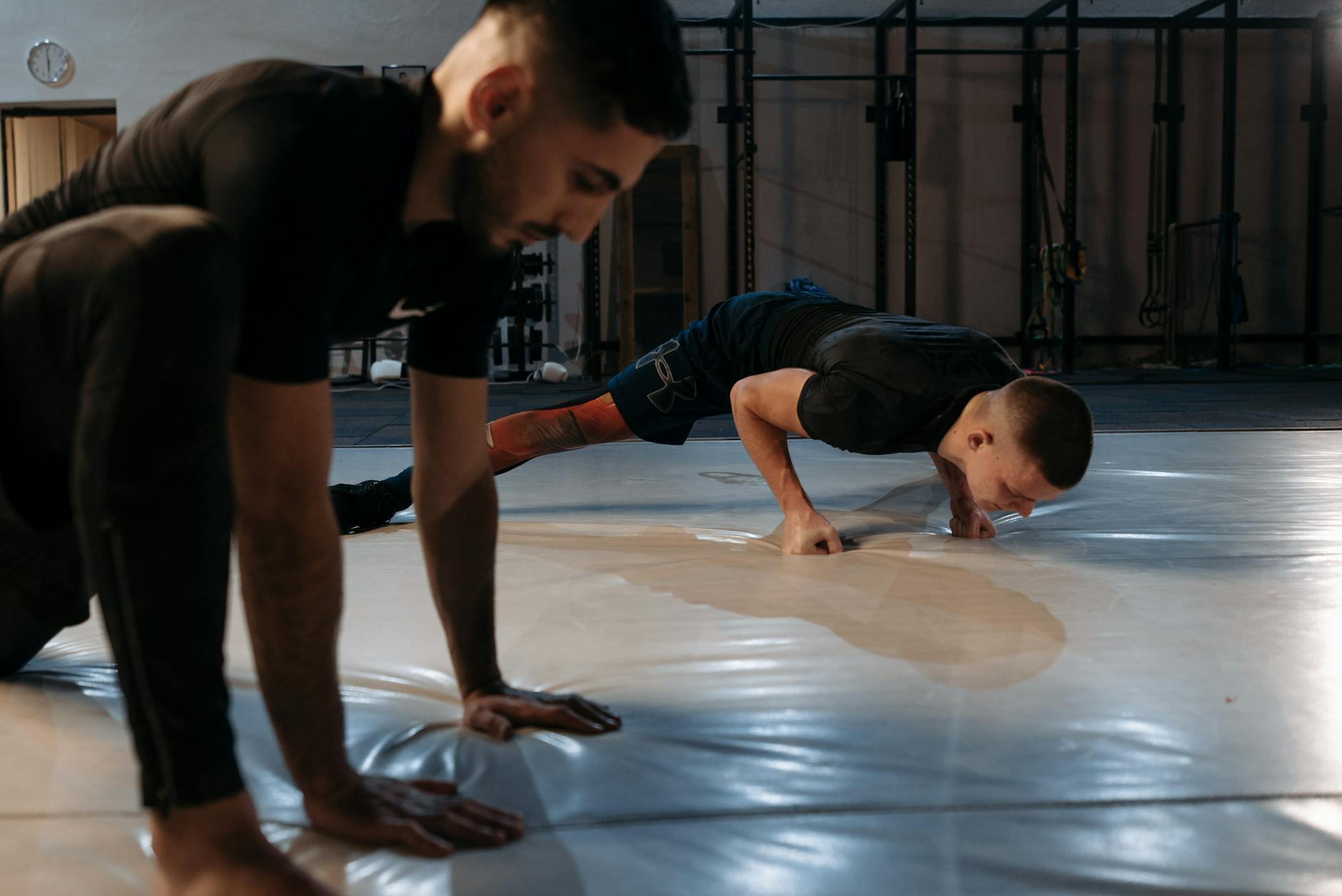
Bodyweight Strength Training
Push-up Variations
-
Standard Push-ups: Perfect form with shoulders aligned, core tight
-
Diamond Push-ups: Hand placement close together, targeting triceps
-
Wide Push-ups: Hands wider than shoulders, focusing on chest
-
Decline Push-ups: Feet elevated, targeting upper chest
-
Incline Push-ups: Hands elevated, ideal for beginners
Squats and Lunges
-
Bodyweight Squats: Focus on depth and proper knee alignment
-
Jump Squats: Add explosive power to traditional squats
-
Walking Lunges: Target legs while improving balance
-
Reverse Lunges: Easier on knees, great for beginners
-
Bulgarian Split Squats: Advanced move for single-leg strength
Core Strengthening Moves
| Exercise | Target Area | Recommended Reps |
|---|---|---|
| Planks | Full Core | 30-60 seconds |
| Mountain Climbers | Lower Abs | 20 per side |
| Russian Twists | Obliques | 15 per side |
| Bird Dogs | Lower Back | 12 per side |
Pull-up Alternatives
-
Inverted Rows: Using a sturdy table or low bar
-
Superman Holds: Targeting back muscles while lying prone
-
Band Pull-aparts: Using resistance bands for upper back
-
Door Frame Rows: Simple alternative using household items
Now that you've learned these fundamental bodyweight exercises, let's explore how to incorporate cardio workouts without any equipment to create a well-rounded fitness routine.
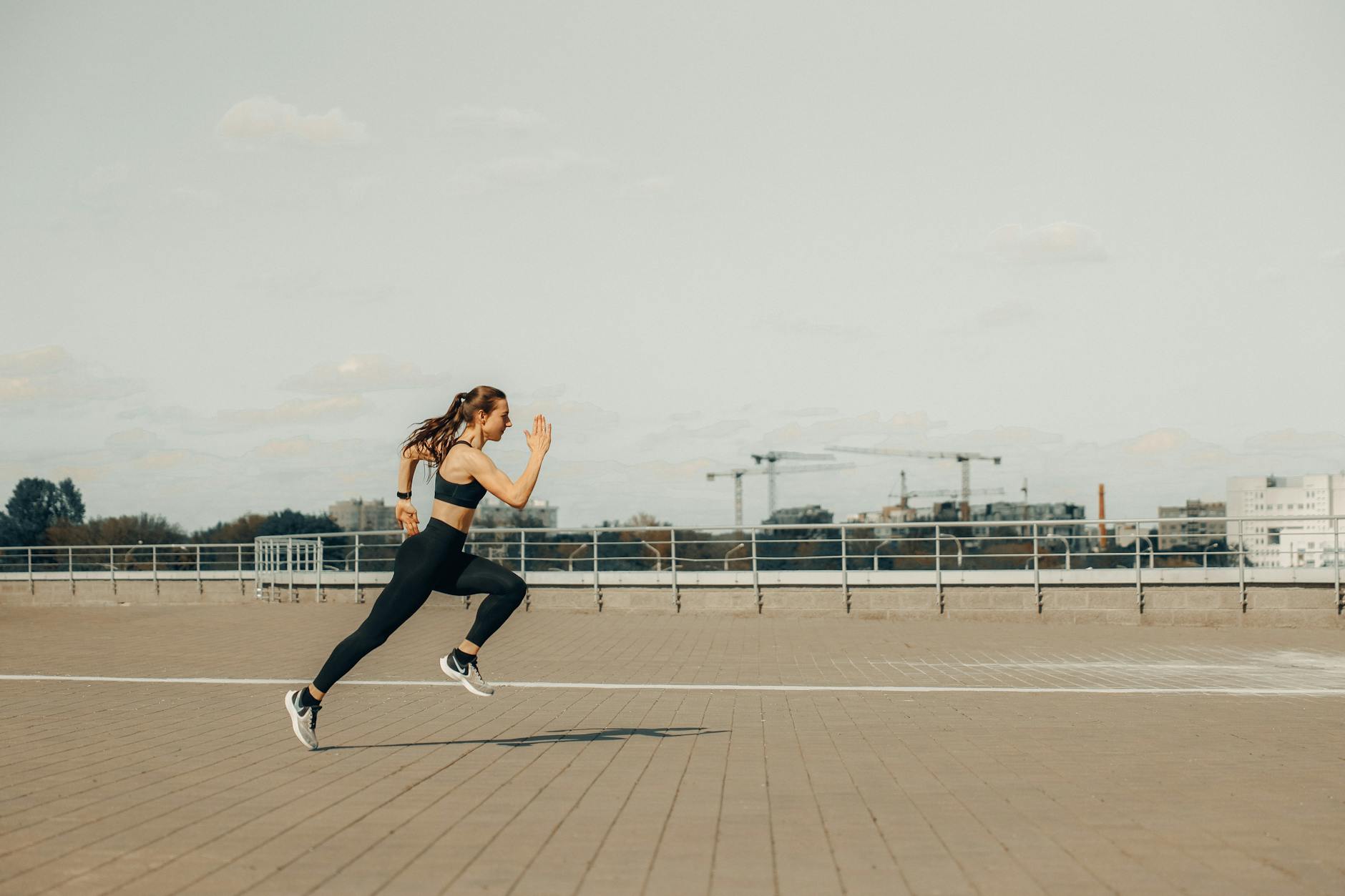
Cardio Workouts Without Equipment
High-Intensity Interval Training (HIIT)
HIIT workouts are perfect for maximizing calorie burn without any equipment. These intensive sessions alternate between bursts of maximum effort and short recovery periods, leading to enhanced fat burning and improved cardiovascular fitness.
Key HIIT exercises include:
-
Jumping jacks (30 seconds)
-
Mountain climbers (30 seconds)
-
Burpees (30 seconds)
-
High knees (30 seconds)
-
Rest (30 seconds)
-
Repeat 3-5 times
Living Room Cardio Routines
Transform your living space into a cardio zone with these simple yet effective movements that require minimal space:
| Exercise | Duration | Intensity Level |
|---|---|---|
| Shadow boxing | 3 minutes | Moderate |
| Spot jogging | 2 minutes | Low |
| Jump squats | 1 minute | High |
| Standing knee drives | 2 minutes | Moderate |
Stair Workouts
If you have access to stairs, they provide an excellent cardio workout opportunity. Here's a basic stair routine:
-
Basic stair climbing (2 minutes)
-
Double-step climbs (1 minute)
-
Side steps (30 seconds each side)
-
Stair sprints (1 minute)
-
Walking recovery (1 minute)
For maximum effectiveness, perform these exercises for 20-30 minutes, three times per week. Remember to maintain proper form and start slowly if you're new to cardio training.
Now that you've learned about equipment-free cardio options, let's explore how to maintain flexibility and mobility, which are crucial components of a well-rounded fitness routine.

Flexibility and Mobility Training
Dynamic Stretching Routines
Dynamic stretching prepares your body for movement while improving flexibility. Include these essential dynamic stretches in your routine:
-
Arm circles (forward and backward)
-
Leg swings (forward-back and side-to-side)
-
Hip circles and rotations
-
Walking lunges with torso rotation
-
High knees and butt kicks
Yoga-Inspired Movements
Incorporate these fundamental yoga poses to enhance flexibility and body awareness:
| Pose Name | Benefits | Duration |
|---|---|---|
| Downward Dog | Stretches back, shoulders, hamstrings | 30-60 seconds |
| Cat-Cow | Improves spine mobility | 8-10 repetitions |
| Warrior Series | Strengthens legs, opens hips | 30 seconds each side |
Joint Mobility Exercises
Focus on these key areas to maintain healthy joint function:
-
Shoulder blade squeezes and rolls
-
Wrist and ankle rotations
-
Hip internal/external rotations
-
Thoracic spine rotations
-
Neck tilts and rotations
Recovery Techniques
Implement these recovery methods to maintain flexibility:
-
Self-massage using foam rollers
-
Static stretching post-workout
-
Controlled breathing exercises
-
Progressive muscle relaxation
Now that you've learned about flexibility and mobility, let's explore how to structure these exercises into an effective workout schedule that fits your lifestyle.

Creating Your Workout Schedule
Balancing Different Exercise Types
A well-structured home workout schedule requires careful distribution of various exercise types throughout the week. Here's how to balance your routine:
-
Strength Training: 2-3 sessions per week
-
Cardio Sessions: 2-3 sessions per week
-
Flexibility Work: 2-4 sessions per week
-
Recovery Days: 2-3 days per week
Progressive Overload Methods
Ensure continuous improvement with these home-based progression techniques:
| Method | Example | Frequency |
|---|---|---|
| Rep Increase | 10 → 12 → 15 pushups | Weekly |
| Set Addition | 2 → 3 → 4 sets | Bi-weekly |
| Time Under Tension | 2s → 4s per rep | Weekly |
| Reduced Rest | 90s → 60s → 45s | Weekly |
Rest Day Planning
Strategic rest is crucial for optimal results. Implement these rest day patterns:
-
Alternate upper and lower body days
-
Schedule active recovery days (light walking, stretching)
-
Place rest days after intense strength sessions
-
Allow 48 hours between training the same muscle groups
For optimal results, start with three workout days per week, gradually increasing to four or five as your fitness improves. Focus on mastering proper form before increasing intensity or volume. Your schedule should adapt to your energy levels and recovery capacity.
Now that you have a solid workout structure, let's explore how to effectively track your progress without specialized equipment.
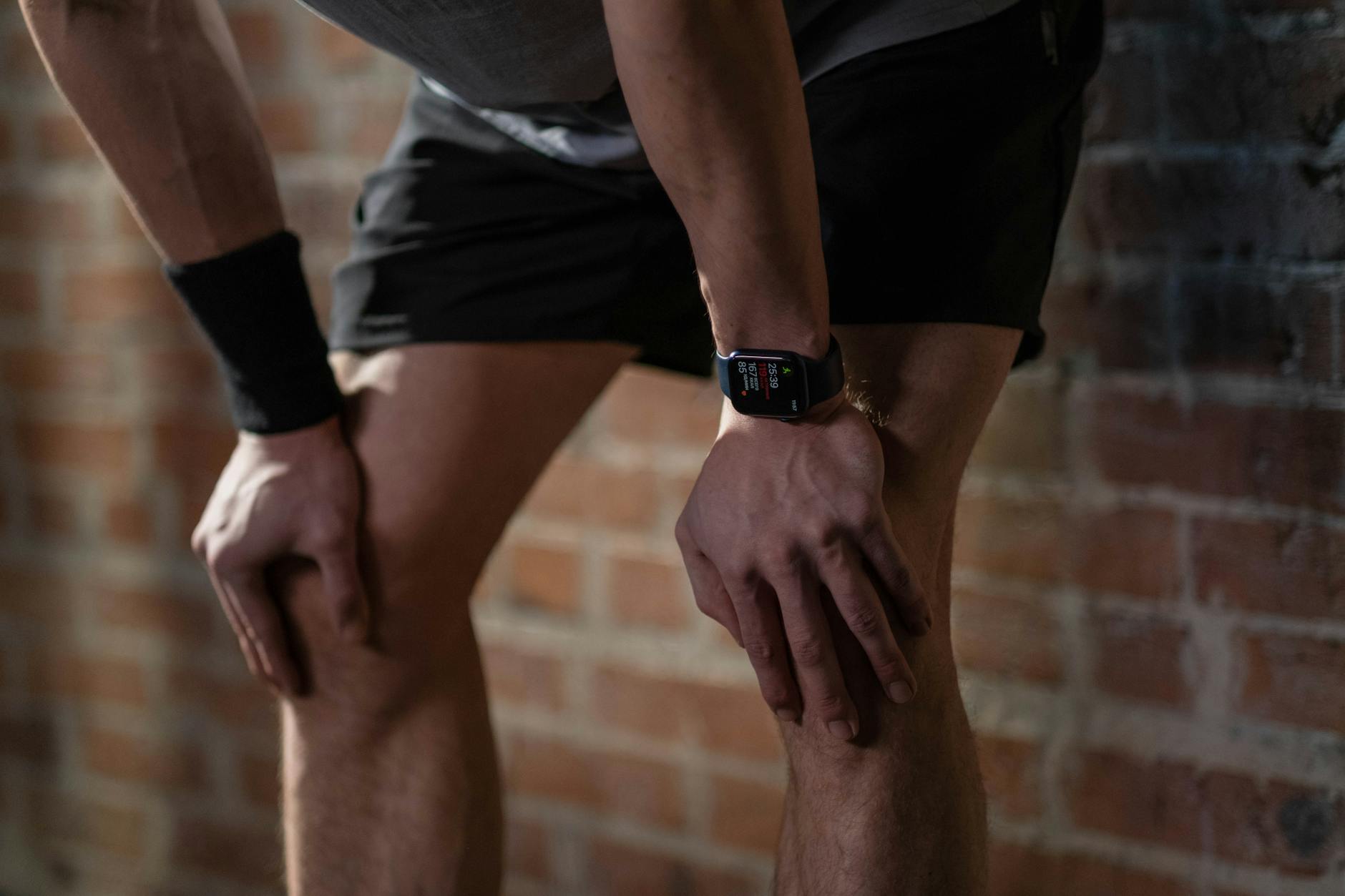
Tracking Progress Without Equipment
Body Measurements
Using a simple tape measure, track key measurements monthly:
-
Waist circumference
-
Hip measurements
-
Chest size
-
Upper arm and thigh circumference
Record these numbers in a dedicated fitness journal or smartphone app for easy comparison over time.
Fitness Tests
Perform these baseline tests every 4-6 weeks:
| Test Type | Measurement |
|---|---|
| Push-ups | Max in 1 minute |
| Squats | Max in 1 minute |
| Wall sit | Time held |
| Plank | Duration held |
Progress Photos
Take photos from three angles:
-
Front view
-
Side profile
-
Back view
Maintain consistent conditions:
-
Same time of day
-
Similar clothing
-
Identical lighting
-
Fixed camera position
Exercise Milestones
Track these key performance indicators:
-
Number of consecutive push-ups
-
Duration of wall sits
-
Plank hold time
-
Number of burpees in 3 minutes
-
Time to complete 100 jumping jacks
Create a milestone checklist and celebrate small wins. Document improvements in form and technique, not just numbers. Remember that progress isn't always linear - some weeks you'll see dramatic improvements, while others might show minimal change.
Now that you have reliable ways to track your progress, let's explore some common mistakes to avoid during your home workout journey.

Common Mistakes to Avoid
Form and Technique Issues
-
Rushing through exercises without proper form
-
Not maintaining core engagement
-
Using momentum instead of controlled movements
-
Incorrect body alignment during exercises
Poor form can lead to injuries and reduced exercise effectiveness. Here's a quick breakdown of common form mistakes and their solutions:
| Mistake | Impact | Solution |
|---|---|---|
| Rounded back | Spinal stress | Keep neutral spine, engage core |
| Locked joints | Joint strain | Maintain slight bend in joints |
| Shallow range | Limited results | Complete full range of motion |
| Fast movements | Reduced benefits | Control pace, focus on form |
Overtraining Risks
Too much enthusiasm can lead to overtraining, which manifests through:
-
Persistent fatigue
-
Decreased performance
-
Mood changes
-
Insomnia
-
Increased injury risk
Recovery Errors
Common recovery mistakes include:
-
Not taking rest days
-
Inadequate sleep (aim for 7-9 hours)
-
Insufficient protein intake
-
Ignoring minor injuries
-
Not varying workout intensity
Remember to listen to your body and adjust your workout intensity accordingly. Recovery is just as important as the exercise itself, and proper form is crucial for preventing injuries and maximizing results. Maintaining correct technique might mean doing fewer repetitions initially, but it's essential for long-term progress.
Now that you understand what to avoid, let's explore some advanced techniques to take your home workouts to the next level.

Advanced Home Training Techniques
Circuit Training Methods
Circuit training combines strength and cardio exercises in a rapid sequence, maximizing caloric burn and muscle engagement. Create 6-8 exercise stations, performing each for 45 seconds with 15 seconds rest:
-
Push-ups → Squats → Mountain climbers → Lunges → Planks → Burpees
-
Complete 3-4 rounds with 1-minute rest between circuits
Tabata Workouts
This high-intensity method follows a strict 20/10 protocol:
| Timing | Activity |
|---|---|
| 20 seconds | Maximum effort exercise |
| 10 seconds | Complete rest |
| Total | 4 minutes (8 rounds) |
Pyramids and Supersets
Pyramid sets progressively increase or decrease repetitions:
-
Ascending: 5-10-15-20 reps
-
Descending: 20-15-10-5 reps
-
Diamond: 5-10-15-10-5 reps
Pair complementary exercises for supersets:
-
Push-ups + Rows
-
Squats + Lunges
-
Core + Back exercises
Time Under Tension Training
Slow down movement phases to increase muscle fiber recruitment:
-
Eccentric (lowering): 4 seconds
-
Pause: 1 second
-
Concentric (lifting): 2 seconds
This technique works particularly well with:
-
Bodyweight squats
-
Push-ups
-
Wall sits
-
Plank variations
Now that you've learned these advanced techniques, let's explore how proper nutrition can support your enhanced training routine.
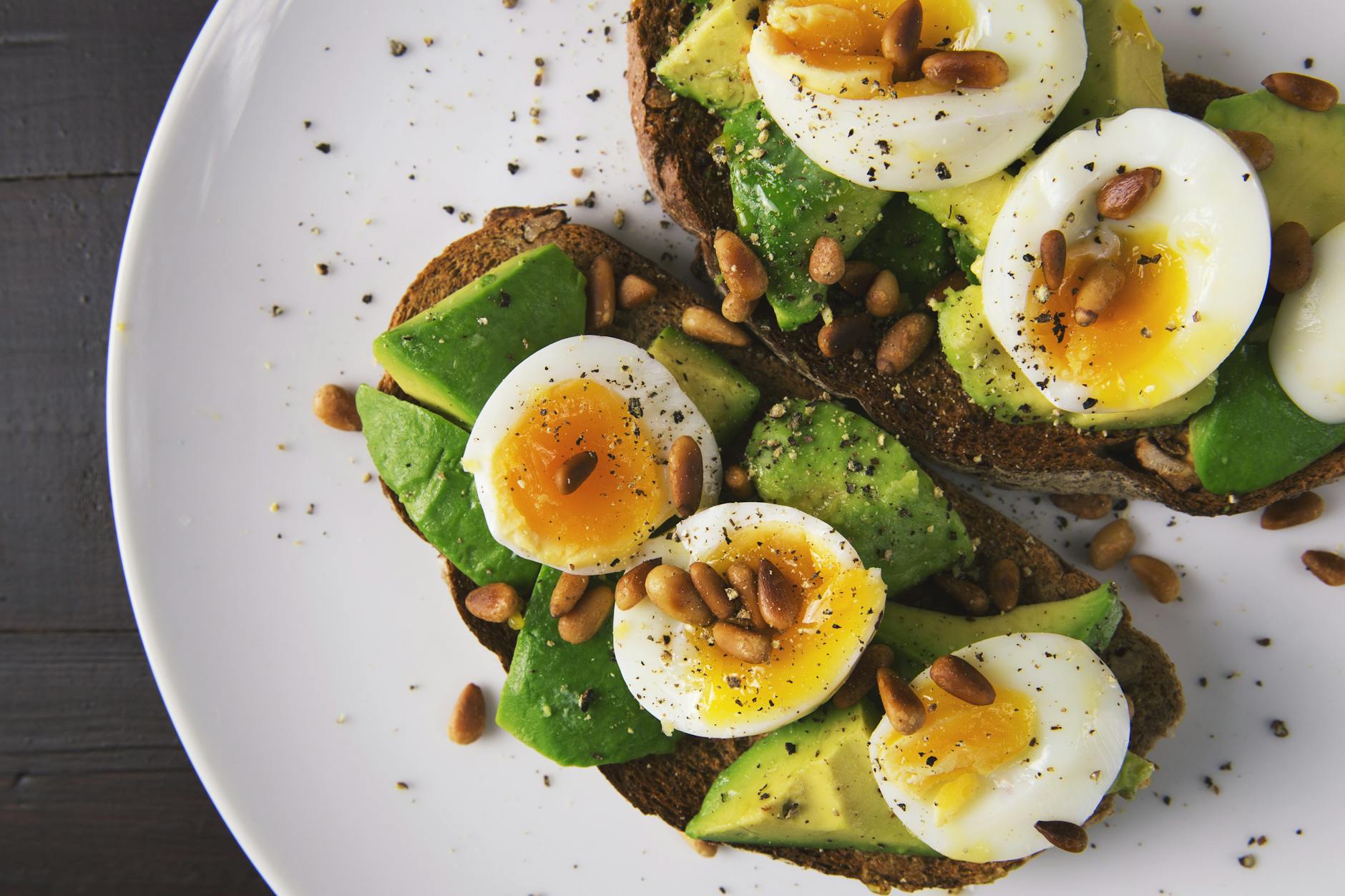
Nutrition Support for Home Workouts
Pre-workout Fuel
The right pre-workout nutrition energizes your home training sessions and maximizes results. Aim to eat 1-2 hours before exercising, focusing on easily digestible carbohydrates and moderate protein.
Optimal Pre-workout Snacks:
-
Banana with 1 tablespoon peanut butter
-
Greek yogurt with berries
-
Whole grain toast with egg whites
-
Apple slices with almonds
Post-workout Recovery
Your body needs proper nutrients within 30 minutes after exercise to repair muscles and replenish energy stores.
| Nutrient | Function | Food Sources |
|---|---|---|
| Protein | Muscle repair | Eggs, chicken, tofu |
| Carbs | Energy restoration | Sweet potatoes, quinoa |
| Electrolytes | Mineral balance | Coconut water, bananas |
Hydration Guidelines
Proper hydration is crucial for home workout performance and recovery. Follow these evidence-based guidelines:
Daily Hydration Schedule:
-
16 oz water upon waking
-
8 oz 30 minutes before workout
-
4-6 oz every 15 minutes during exercise
-
16-24 oz post-workout
For intense sessions lasting over 60 minutes, consider adding electrolytes to your water. Monitor your hydration status by checking urine color - it should be light yellow.
With proper nutrition and hydration supporting your home workouts, you'll be ready to develop sustainable workout habits that last. Let's explore how to make these workouts a permanent part of your lifestyle.

Making Workouts Sustainable
Building Long-term Habits
-
Set realistic micro-goals (5-minute daily workouts)
-
Stack habits with existing routines
-
Create environmental triggers
-
Track streak days using a simple calendar
Staying Motivated
-
Document progress with photos and measurements
-
Join online fitness communities
-
Share goals with accountability partners
-
Reward yourself for achieving milestones
Adapting Workouts Over Time
Progressive overload is essential for long-term success. Here's how to adapt your home workouts:
| Phase | Duration | Adaptation Method |
|---|---|---|
| Beginner | 1-2 months | Increase reps |
| Intermediate | 2-4 months | Add complexity |
| Advanced | 4+ months | Increase intensity |
The key to sustainable home workouts lies in making them an integral part of your daily routine. Start by designating a specific workout area in your home and setting aside consistent time slots. Use the "two-day rule" - never skip workouts for more than two consecutive days.
To maintain momentum, rotate between different workout styles to prevent boredom. When bodyweight exercises become too easy, add variations like tempo changes or unilateral movements. Consider investing in minimal equipment like resistance bands as your strength improves.
Regular assessment is crucial - every 4-6 weeks, evaluate your routine's effectiveness and make necessary adjustments. Listen to your body and modify workouts based on energy levels and recovery needs. Remember that consistency trumps intensity - it's better to do moderate workouts regularly than intense sessions sporadically.
Now that you've learned how to make your workouts sustainable, you're well-equipped to achieve your long-term fitness goals from the comfort of your home.
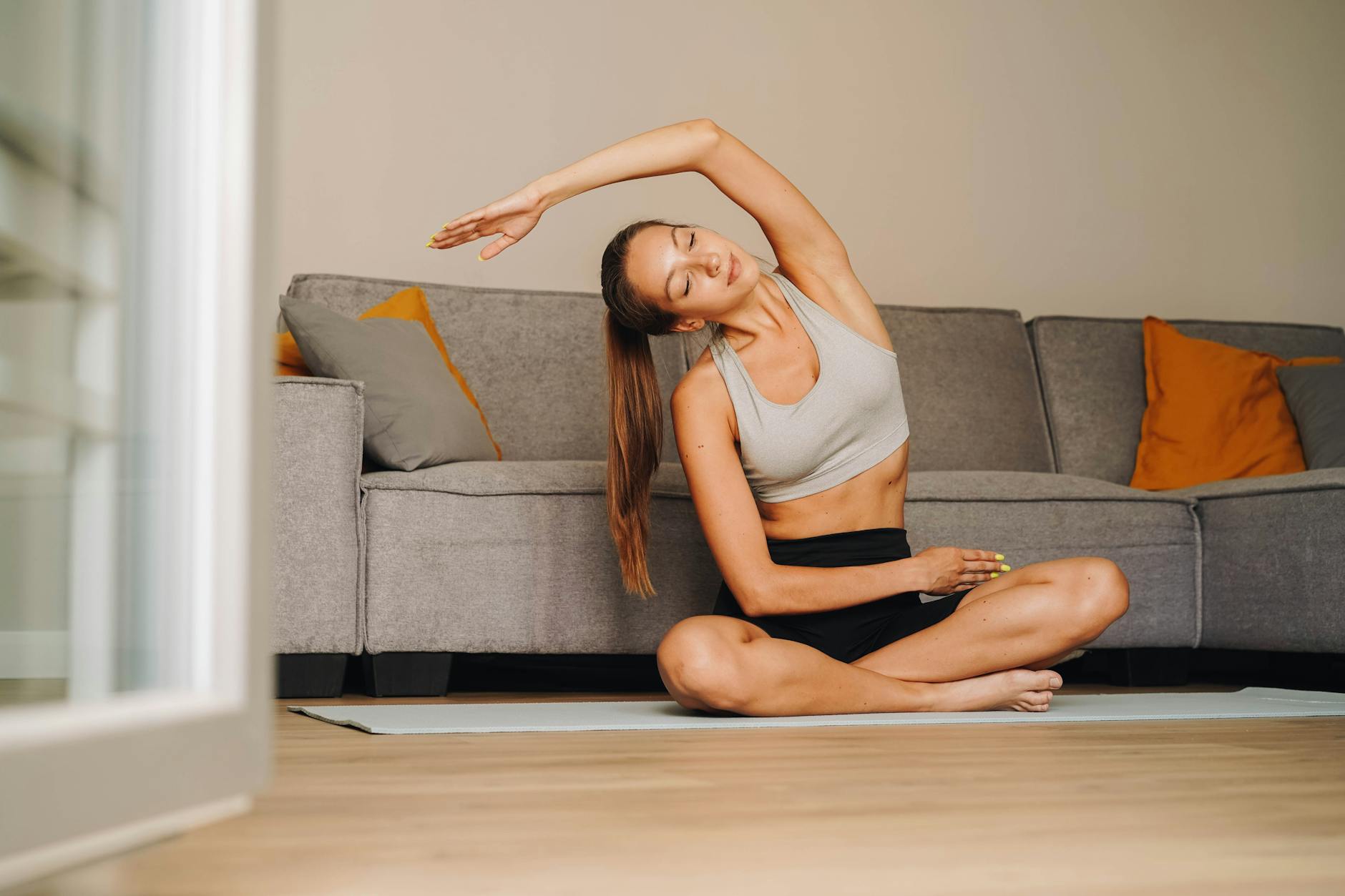
Getting fit from home is not only possible but can be highly effective with the right approach and dedication. By incorporating bodyweight exercises, cardio workouts, and flexibility training into a well-structured routine, you can achieve your fitness goals without stepping foot in a gym. The key is to start with essential basics, track your progress, and maintain proper nutrition while avoiding common pitfalls.
Remember, sustainable fitness is a journey, not a destination. Whether you're a beginner or an advanced fitness enthusiast, these at-home workouts can be adapted to your level and schedule. Take the first step today by choosing one workout from this guide and commit to making it a regular part of your healthy lifestyle.

Comments
Post a Comment